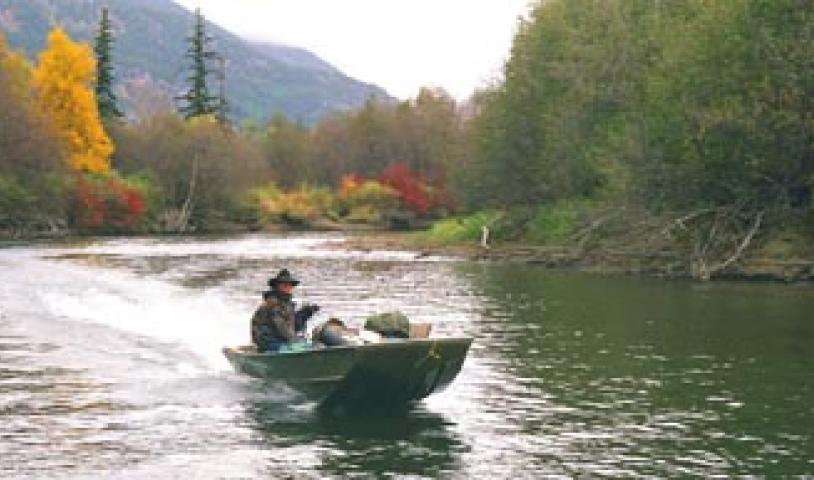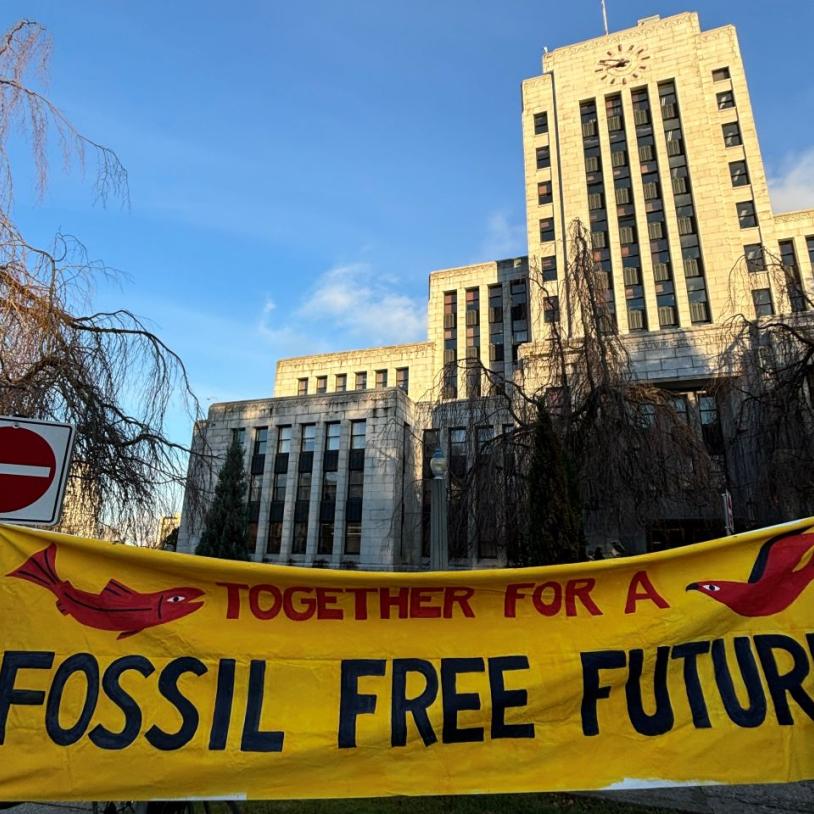We have the ability to do green energy the right way in B.C.
Saturday, September 12, 2009
Photo: Klinaklini River
Gargoyle, Red Tusk, Klinaklini and Billy Goat aren't just wild creeks and rivers with intriguing names. They are just a few of the more than 800 water bodies staked by private power developers in British Columbia over the last seven years.
How did this gold rush on our rivers start? The trigger was the 2002 B.C. Energy Plan which decreed that "the private sector will develop new electricity generation, with BC Hydro restricted to improvements at existing plants."
Today, because of that direction, rivers and creeks across BC from the Sunshine Coast to the Kootenays are being prepared for diversion into pipes despite questionable benefit for British Columbians and certain environmental damage.
There are numerous problems with the rush to privatize our creeks and rivers.
- More than 90 per cent of B.C.'s private hydro projects aren't required to go through an environmental assessment process.
- Government agencies provide little oversight because they are overworked and overwhelmed. The Ministry of Environment was gutted by the B.C. government in 2002, losing almost one-third of its budget and staff. Astoundingly, another round of ministry cuts took place this month.
- Private hydro projects are often given exemptions from existing environmental laws due to their classification as "minor tenures." Government documents show that this classification has resulted in damage to fish-bearing creeks, cutting to stream banks, logging in old-growth management areas and destruction of endangered species habitat.
- There is no assessment of the cumulative impact that multiple power projects -- and the accompanying river diversions, roads, blasting, transmission lines and staging areas -- have on the land base.
- Local governments have been muzzled since the 2006 passage of Bill 30, which removed the right for them to plan for power projects or reject them.
- We have no overarching provincial or regional planning process, resulting in rivers with high ecological and tourism values being inappropriately staked for development.
The projects aren't small mom-and-pop operations. The massive 1,027-megawatt Bute Inlet development, proposed by General Electric and Plutonic Power, would be the largest private power project in Canada. Located 150 kilometres north of Powell River, it would see construction of over 445 kilometres of transmission lines, 314 kilometres of roads, and 104 bridges -- all in the heart of grizzly bear, mountain goat, and salmon habitat.
People are worried about environmental impacts and are becoming increasingly concerned about the financial liabilities of these projects. BC Hydro and ratepayers are on the hook for $31 billion in energy purchase agreements to private power producers -- for power that comes at the wrong time of the year for B.C.'s energy needs. Most run-of-river electricity is generated during the spring melt when B.C.'s dams are often full; almost nothing is produced in mid-winter when our consumption is highest. As a result, BC Hydro is paying a premium for electricity that doesn't fit our energy needs and is destined to be sold at a loss south of the border.
The public is told that we need this power because B.C. has an electricity shortage, but an examination of the facts shows this isn't the case. According to B.C. Stats, we have been a net exporter of electricity for seven out of the last 11 years. BC Hydro itself says conservation measures can fully meet B.C.'s energy needs until 2026.
This June more than 1,000 people turned out in the tiny Kootenay town of Kaslo to protest a proposed private hydro power project due to the impact it would have on endangered bull trout, grizzly and mountain caribou habitat. Local citizens didn't turn out to oppose green power; they showed up because they want to see green power done right.
People in B.C. are strongly supportive of green energy, but they want it developed in a democratic manner that protects the environment, includes proper planning, promotes robust conservation measures and benefits the public and not just corporate interests. People want to move towards a sustainable future in a way that recognizes the incredible value that B.C.'s wilderness, old-growth forests and delicate ecosystems have in the fight against global warming.
Instead, our provincial government is blasting ahead with contradictory plans to promote carbon-creating coal mines such as Klappan and Groundhog in northern B.C., increasing subsidies to the oil and gas sector, terminating energy conservation programs such as Live Smart BC, and spending billions on massive highway and airport expansion projects.
We have the ability to do green energy right in B.C.: with proper public oversight and ownership. We must give people real power in the planning process instead of ignoring local concerns and we must move towards a truly green and sustainable future without compromising the ecological health of our wild streams and rivers.
Gwen Barlee is policy director of the Wilderness Committee and George Heyman is executive director of Sierra Club B.C.





